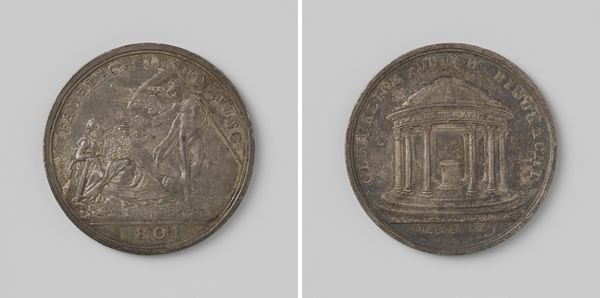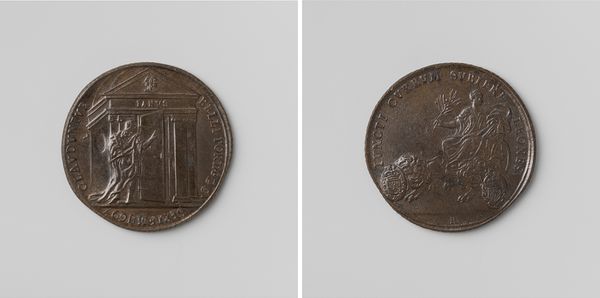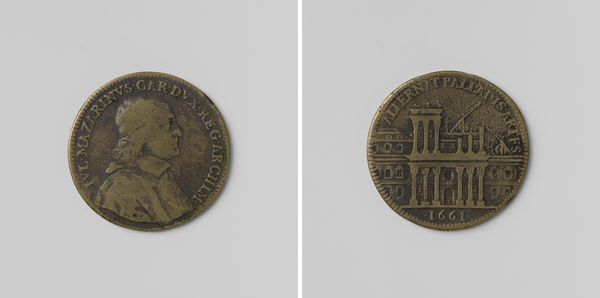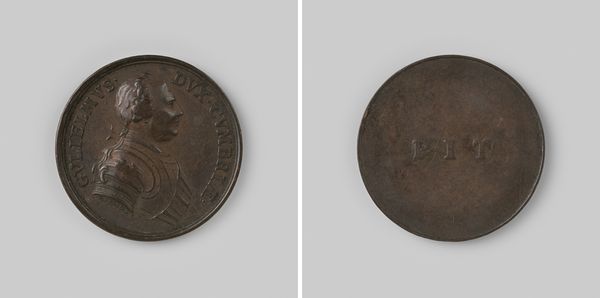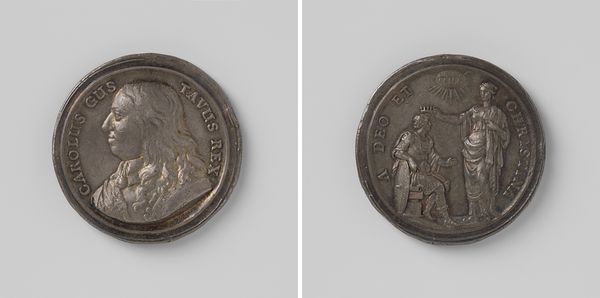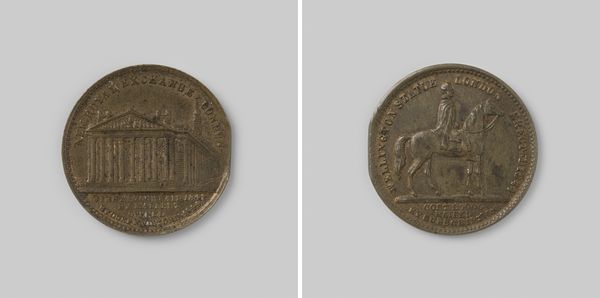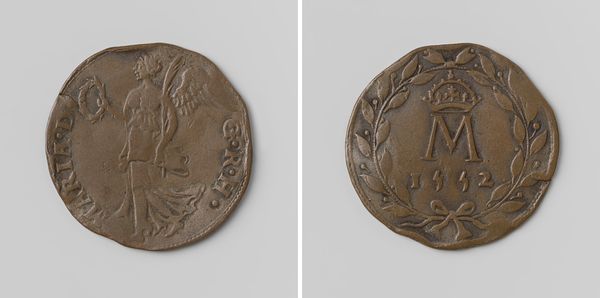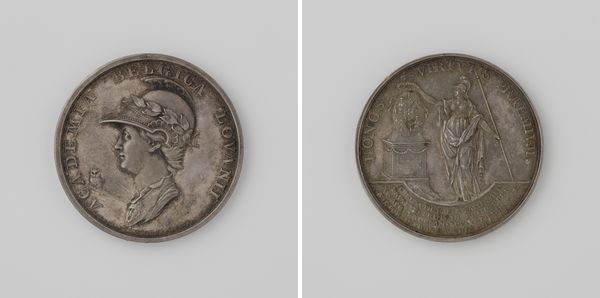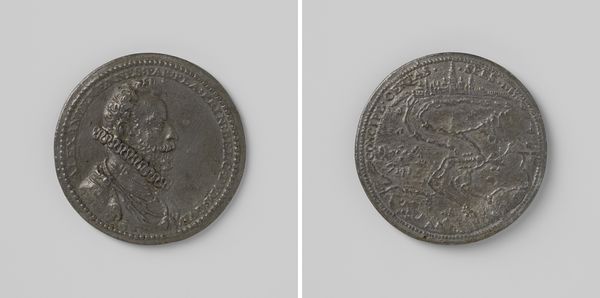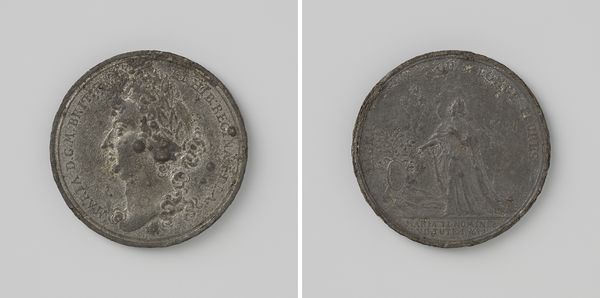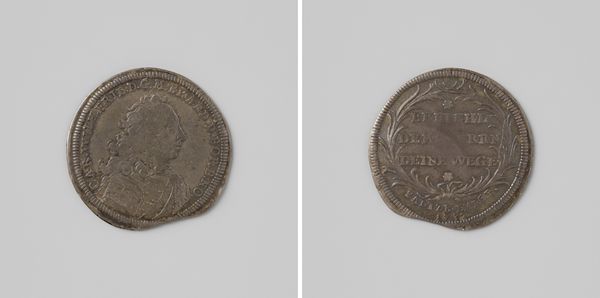
carving, metal
#
portrait
#
carving
#
metal
#
11_renaissance
#
carved
#
history-painting
Dimensions: diameter 2.9 cm, weight 58 gr
Copyright: Rijks Museum: Open Domain
Editor: This is "Religiousness of Philip II, King of Spain," a carved metal object from 1563, currently held in the Rijksmuseum. It’s quite small, like a coin, and the detail is incredible. The profile of Phillip the Second seems… austere. What resonates with you when you look at this? Curator: It strikes me how deliberately this image was crafted to cultivate a particular perception of Philip II. On one side, his portrait encircled by laurel wreaths, classic symbol of triumph and virtue, echoes imperial Roman portraiture. This deliberate linking presents him as a powerful, almost divinely ordained leader. Editor: I see what you mean! And on the other side, there's an image of a temple... What does that symbolize? Curator: The temple speaks to Philip's piety and commitment to religious architecture as a tool of political theatre. The inscription, "PIETAS. PHILIPPI," reinforces this; "pietas" refers to dutifulness and religious devotion. It's a declaration, really. But look closely, do you see how the temple seems incomplete, or even simplified? Editor: Now that you mention it, yes. It’s almost… more symbolic than literal. Curator: Precisely! It speaks volumes about how Philip II wished to be remembered. The imagery conveys this idea of idealized, strong leadership deeply intertwined with divine mandate. But how might that be viewed through the lens of the Dutch revolt happening at that time? Editor: It completely flips it, doesn’t it? It’s propaganda but, like, weaponized? Curator: Yes! This coin is less an objective representation and more a strategic manipulation of his public persona. What starts as the king projecting a sense of himself to his own country could be interpreted quite differently by those that he conquered and sought to repress. Editor: That’s fascinating. I never thought of it as such a deliberate construction, so pointed, so early! Curator: Visual symbolism often carries such weight. Understanding these historical constructions helps us understand not only history, but ourselves.
Comments
No comments
Be the first to comment and join the conversation on the ultimate creative platform.
